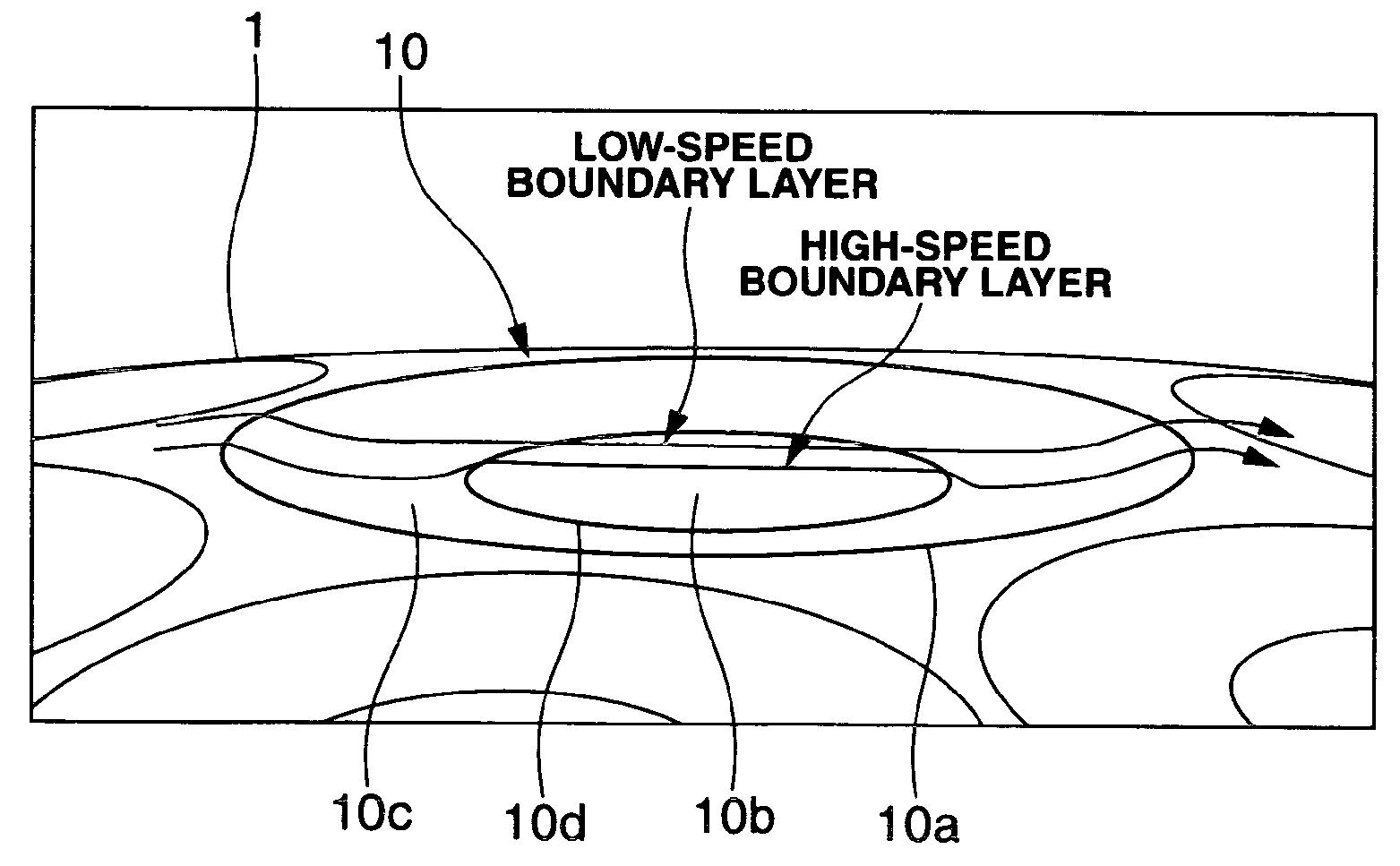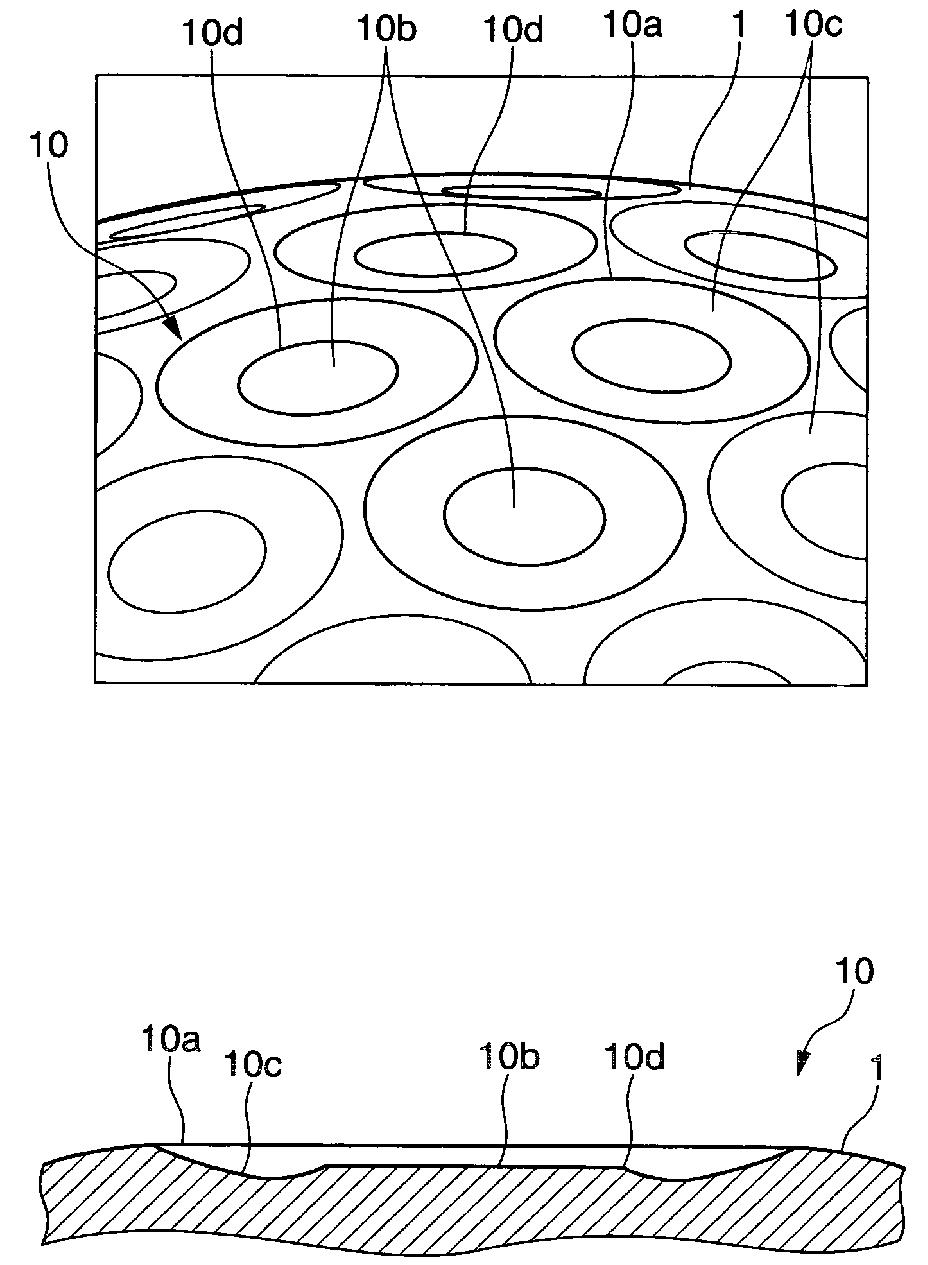Cool Bridgestone Golf Ball Dimple Patent Issued This Week, Could It Be The Key To Gaining Those Few Extra Yards?
I love patents directed to golf ball aerodynamics and fortunately an interesting one issued this week. Yesterday Bridgestone was granted USPN 7503857 titled “Golf Ball.” The patent describes the invention as:
The invention provides a golf ball having a surface on which are formed a plurality of dimples having a circular outer edge that defines the dimple contour. Each dimple has formed therein, near a portion inside the dimple, a raised region with a circular edge, and also has formed therein, between the circular edge of the raised region and the circular outer edge of the dimple, a ring-like wall having a curved cross-sectional shape. The raised region has a top face which is substantially flat, and a height which is at most 60% of the dimple depth from the circular outer edge to the deepest position on the ring-like wall. In this golf ball, the distance of travel can be increased due to an air resistance-decreasing effect and a lift-maintaining effect.
Check out these dimples:
The patent goes on to explain:
BACKGROUND OF THE INVENTION
The present invention relates to a golf ball which has numerous dimples formed on the surface thereof, and excellent flight characteristics when hit by any golfer, whether amateur or professional.
The thin layer of air that flows close to the surface of a golf ball in flight after being hit is called the boundary layer. In a ball without dimples, a stream of air that is free of turbulence forms at this boundary layer. However, when numerous dimples are formed on the surface of the ball, the stream of air at the surface of the ball during flight changes from laminar flow to turbulent flow, causing the airflow separation point to retreat and lowering the air resistance.
In addition, increasing the lift is known to be a major factor in lengthening the flight time of the ball and thus extending its distance of travel. Moreover, it is also known that forming relatively large dimples on the surface of the ball has the effect of maintaining the lift in the low-speed region of the golf ball trajectory after the ball has passed its highest point.
Hence, various dimple designs involving the arrangement of dimples and their shape and structure have hitherto been carried out.
However, the dimple designs developed up until now have been limited in the degree to which they extend the distance traveled by a golf ball. A desire has thus existed to carry out new and original dimple designs so as to further increase the distance traveled by the ball.
SUMMARY OF THE INVENTION
It is therefore an object of the present invention to provide a golf ball which further enhances the aerodynamic performance due to dimple effects, and can thereby increase the distance traveled by the ball.
The inventors have conducted extensive studies in order to achieve the above object. As a result, by setting out primarily to improve the aerodynamic performance of the ball due to dimple effects, both in the high-speed region of the trajectory just after the ball is played and also in the low-speed region after the ball has passed its highest point, the inventors have conceived of dimples having a cross-sectional shape designed for an optimal effect in each of these regions.
Specifically, the inventors have discovered that, in dimples having a circular outer edge that defines the dimple contour, by forming inside the dimple near a center portion thereof a raised region with a circular edge, by forming also, between the circular edge of the raised region and the circular outer edge of the dimple, a ring-like wall having a curved cross-sectional shape, by forming the raised region so as to have a top face that is flat, and by adjusting the height of the raised region so as to be at most 60% of the dimple depth (the depth from the circular outer edge to the deepest position on the ring-like wall), the dimples provide optimal effects both in the high-speed region just after the ball is hit and also in the low-speed region after the ball has passed its highest point.
Interesting stuff!
Dave Dawsey – Tracking Golf Ball Patents
PS – click here for other golf ball posts


